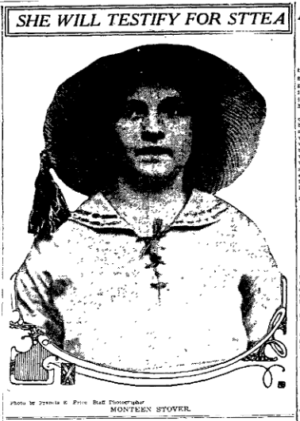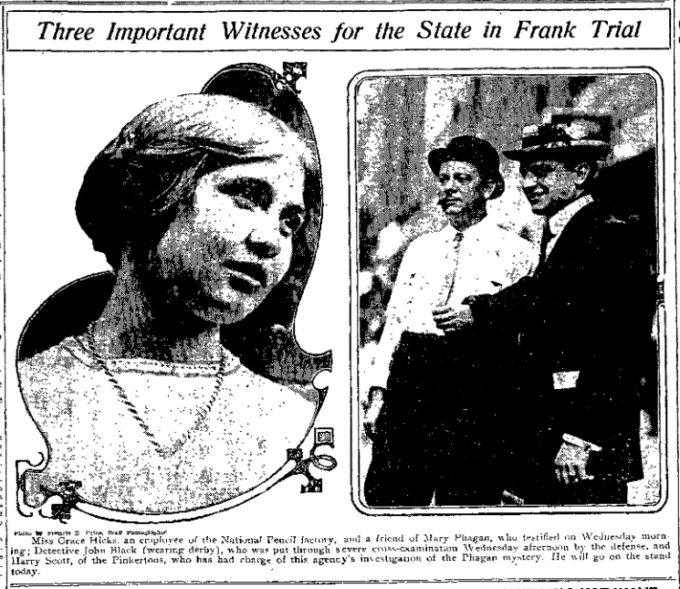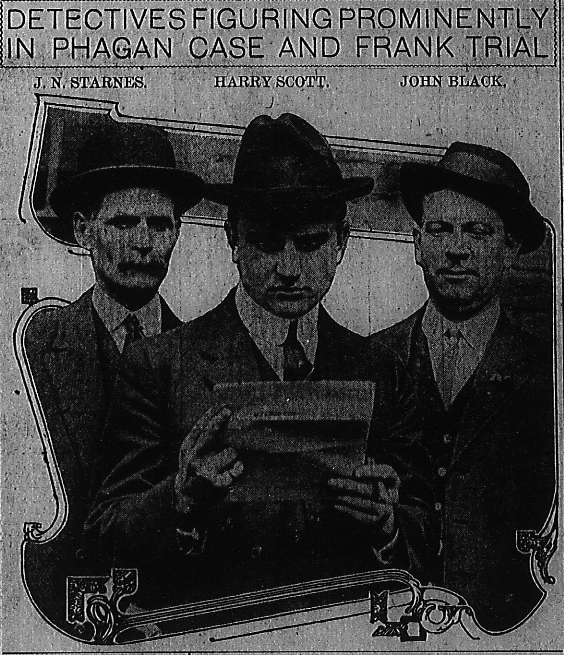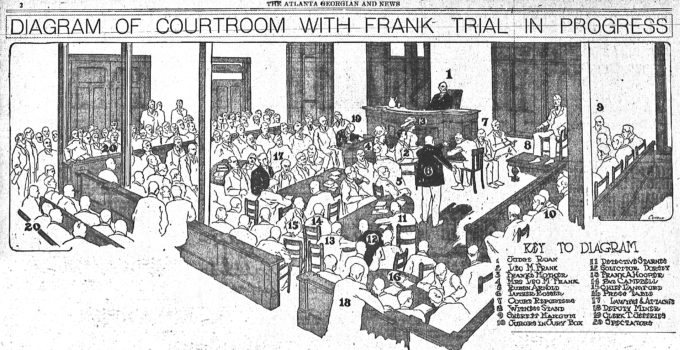Another in our series of new transcriptions of contemporary articles on the Leo Frank case.
Atlanta Constitution
July 31st, 1913
Grace Hicks, a sister-in-law of ‘Boots’ Rogers, whom he carried to the factory the morning of April 27 to tell if the dead girl was an employee of the factory was put upon the witness stand by the state after Rogers had been excused.
She was a daintily dressed slender girl of 17, and declared that she had worked there for the past five years.
To the solicitor’s questions she answered that she had known Mary Phagan for about a year at the pencil factory and that the dead girl had worked on the second floor.
“Did you see her on April 27?” Mr. Dorsey asked.
“Yes.”
Continue Reading →




